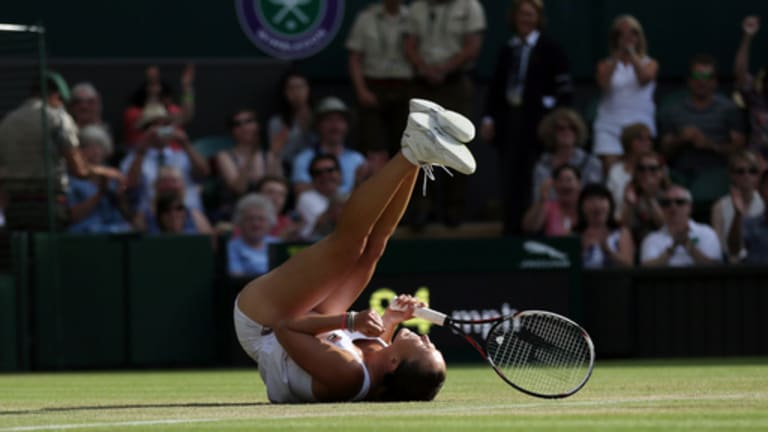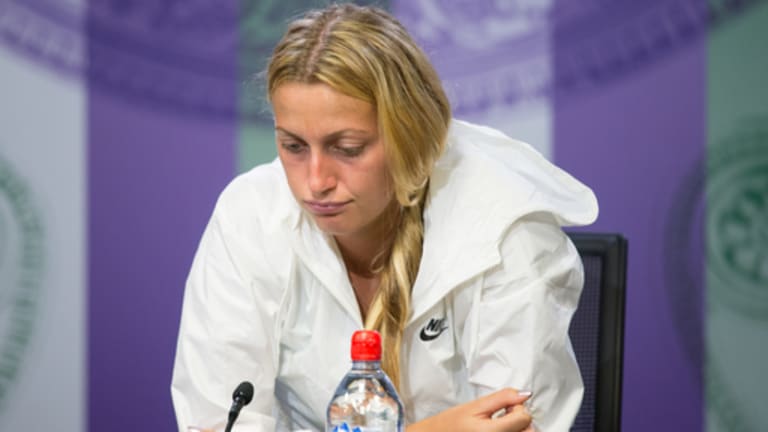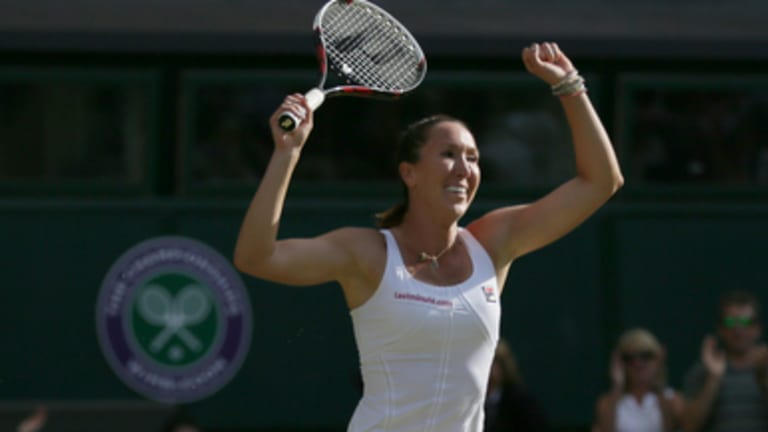In 1982, Jim Valvano and his North Carolina Wolfpack basketball team coined the slogan “survive and advance” to describe their strategy for winning that year’s NCAA tournament. When the underdog group hung on through a series of nail-biters and buzzer-beaters—they made it through the basketball equivalent of four fifth-set tiebreakers—to win the title, the term stuck. Since then, “survive and advance” has become a favored approach of championship contenders everywhere. It offers clarity and simplicity: You don’t have to dominate, you don’t have to win beautifully or gracefully, you don’t even have to play well. Your have one job: To make it to the next round.
If ever an athlete employed the survive-and-advance mentality, it was Serena Williams during her stress-filled run to the French Open title last month. And that may be how she ends up winning Wimbledon as well; the No. 1 seed’s buzzer-beating win over Heather Watson on Friday was the definition of victory by any means necessary. Today it was the No. 2 seed’s turn to try to do the same thing. Could Petra Kvitova survive her own moment of trial, and advance?
As with Serena, there were no warning signs in the first set that Kvitova might face any trouble from her opponent, 28th-seeded Jelena Jankovic. Kvitova controlled the points in the expected way, with her serve and forehand, and didn’t show any hints of the inconsistency that afflicts her everywhere but Centre Court. Her serve in particular was key. Kvitova isn’t an ace machine, but she does have a heavy lefty slice. Grass, which hurries a curving shot along its path faster than any other surface, helps pull that serve away from her opponents. When Kvitova hooked one down the T and held for 4-2 in the second set, she appeared all but into the second week.
Unlike Serena, though, Kvitova was facing an opponent who had once been ranked No. 1 in the world, and who had won two of their six meetings. It’s true Jankovic has traditionally been allergic to grass—“It doesn’t come natural to me,” she said today—and that she had lost in the first round at Wimbledon three of the last five years. Today, JJ wore a sponsorship patch for the travel website lastminute.com on her otherwise all-white dress; the phrase was apt, because JJ found her form at the 11th hour.
Jankovic has always been an expert absorber and redirector of pace, and normally grass is a good fit for an athlete with her natural mobility. From 2-4 in the second set, everything finally clicked for her on the surface. She began to use the pace that Kvitova gave her and deflect the ball into the opposite corner. You could see and even hear that Jankovic was making cleaner contact with the ball now, and was playing well within herself.
By the end of the set, it was Kvitova who was on a string, chasing the ball futilely from sideline to sideline. Her face began to flush, likely from nerves and exhaustion. She had played and walked with purpose and confidence in her first two matches; now she hesitated and lost control of her serve. In the third set, her game unraveled completely as she tried to find a way around Jankovic’s sturdy, speedy defenses. This time Kvitova’s beloved Centre Court could offer no help.
“It’s tough to explain,” a glum Kvitova said afterward. “I’m not really sure what happened out there. I was kind of up in the second set, and then suddenly I felt like she was coming back and playing a little bit more aggressive. Suddenly from my side I didn’t have an answer for it. My serve didn’t help either. I was really struggling with each shot that I played from there.”


